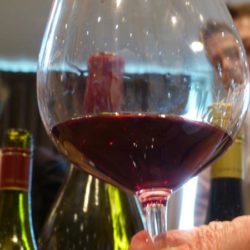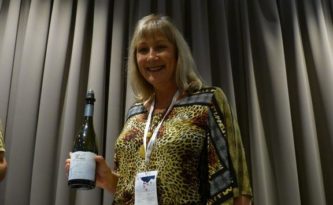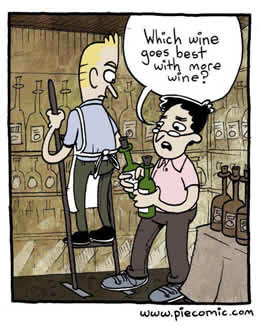
Author: Editor

Size does matter!!
 All you wanted to know about bottle sizes, but were afraid to ask.
All you wanted to know about bottle sizes, but were afraid to ask.Split
187 mlHalf-Bottle
Holds 375 ml or one half of the standard bottle size.Bottle
Holds 750 ml – the standard size.Magnum
Two bottles or 1.5 litres.Double Magnum
Twice the size of a magnum, holding 3.0 litres, or the equivalent of 4 bottles.Jeroboam
There are two sizes of Jeroboams: the sparkling wine Jeroboam holds 4 bottles, or 3.0 litres: the still wine Jeroboam holds 6 regular bottles, or 4.5 litres.Rehoboam
Champagne only – 4.5 litres or 6 bottles.Imperial
Holds 6 litres or the equivalent of 8 bottles. Tends to be Bordeaux shaped.Methuselah
Same size as an Imperial (6 litres) but is usually used for sparkling wines and is Burgundy-shaped.Salmanazar
Holds 12 regular bottles (one case), or 9.0 litres.Balthazar
Holds 16 bottles or 12.0 litres.Nebuchadnezzar
Holds 20 bottles of wine or 15.0 litres. According to my colleague John Ager, quoting from Fogwells Wine Guide, it is equivalent to 20 standard bottles (15 litres, 3.96 US gal., 3.3 UK gal.). Bill Tighe says that the Nebuchadnezzar, according to the “Random House unabridged Dictionary of the English language, as she is spoken here in the colonies, is 20 quarts, or 18.9 litres”. I suspect something amiss here! The Concise Oxford doesn’t mention the word. The Encarta World English Dictionary refers only to the Babylonian king.
Giesen preview for June
 Growing up in Germany as the sons of a stonemason may not be the most likely start for the founders of a New Zealand winery, but when you look closer, wine is practically running in Theo, Alex and Marcel Giesen’s veins. For centuries, their family members have been involved in the culinary and wine trades, as sommeliers, restaurateurs and other related careers. As youths, the boys had a hobby vineyard that first ignited their interest in grapes.
Growing up in Germany as the sons of a stonemason may not be the most likely start for the founders of a New Zealand winery, but when you look closer, wine is practically running in Theo, Alex and Marcel Giesen’s veins. For centuries, their family members have been involved in the culinary and wine trades, as sommeliers, restaurateurs and other related careers. As youths, the boys had a hobby vineyard that first ignited their interest in grapes.While Alex and Theo were initially travelling abroad in Australia and then through New Zealand, they quickly fell in love with the lands. The brothers noticed a limited range of wines available during a chance visit to a local wine shop, with most bottles from the warmer North Island. Alex and Theo agreed the cooler climate of the South Island would be an ideal place to grow certain wines like Riesling, a popular German varietal. This was the catalyst to purchase their first land, in Burnham on the outskirts of Christchurch.
Today, They’re proud to have operations throughout the Marlborough region. The company is built on the brothers’ shared passion and family values – every member of the Giesen Wines team works together on building up and maintaining the reputation of the Giesen name worldwide. More next month.
AGM – From the Editor
 It’s time for our AGM and we are looking forward to a great attendance. Look at the benefits, scintillating company, some nice food, some even nicer wine, and all at no cost to you personally’
It’s time for our AGM and we are looking forward to a great attendance. Look at the benefits, scintillating company, some nice food, some even nicer wine, and all at no cost to you personally’The notice is incorporated above and a couple of the supporting documents are attached to the emailed newsletter. Other information will be available at the meeting. No need to bring your tasting glasses, Cellar Club glasses will be available.
Cheers
Robin Semmens, Editor
Ata Rangi – Martinborough – March 2017
 Despite a last-minute hitch over the presenter for this tasting (a family bereavement intervened), we were able to arrange for Keith Tibble, Eurovintage, to present, at very short notice, what transpired to be a wonderful tasting.
Despite a last-minute hitch over the presenter for this tasting (a family bereavement intervened), we were able to arrange for Keith Tibble, Eurovintage, to present, at very short notice, what transpired to be a wonderful tasting.The wines presented were great wines and Keith has said that he would be available to present other tastings. It is very useful to have someone like Keith who can step in at comparatively short notice. On this occasion, we were lucky enough to have the Ata Rangi wines on hand. Great effort from him and from Murray who was organising the tasting.
To recap, the wines tasted were:
- Lismore Pinot Gris 2016 (Conversational wine)
- Petrie Chardonnay 2015
- Craighall Chardonnay 2015
- Crimson Pinot Noir 2015
- Ata Rangi Pinot Noir2014
- McCrone Pinot Noir 2013
- Kahu Botrytis Riesling 2016

Ata Rangi, Blue Wine, Fair Go, Quiz night
Ata Rangi
 One of the matters that arose from the Ata Rangi tasting was the challenge to match our door charge to the cost of the evening. We don’t want to risk member resistance by charging too high a door price. We were pleased that we had a good membership turnout. This tasting was subsided by 5 to 6 dollars per member. We figure this into our costing structure but we would just like to remind members that one of the benefits of the wine club is the subsiding of tastings such as Ata Rangi, which might otherwise be more expensive than people are prepared to pay.
One of the matters that arose from the Ata Rangi tasting was the challenge to match our door charge to the cost of the evening. We don’t want to risk member resistance by charging too high a door price. We were pleased that we had a good membership turnout. This tasting was subsided by 5 to 6 dollars per member. We figure this into our costing structure but we would just like to remind members that one of the benefits of the wine club is the subsiding of tastings such as Ata Rangi, which might otherwise be more expensive than people are prepared to pay.Blue Wine News
 I hope you have all noticed that we scooped the Dominion Post with the blue wine story in the last newsletter. Observant members will have noted that the paper has only carried an item on this subject in the last week. When it comes to wine, look for it here first.
I hope you have all noticed that we scooped the Dominion Post with the blue wine story in the last newsletter. Observant members will have noted that the paper has only carried an item on this subject in the last week. When it comes to wine, look for it here first.Fair Go
I refer back to the quote in a previous newsletter about making ice blocks with leftover wine, which confused me greatly as I had to ask, “what is leftover wine?” This all leads me to the last issue of this newsletter where I mentioned the Fair Go episode which highlighted that some producers were using Australian wines to bolster their cheaper lines. The argument was that as 70% of NZ white wines are exported they cannot produce enough “economy”
wines for the local market.Quiz night
 While researching for our quiz night it transpires that the average price for a bottle of New Zealand wine in Britain (where a significant amount of our wine goes) is only $5.92. Apparently, a sizable amount of NZ wine is sent to the UK in bulk and re-bottled there. Seems a lot of trouble to go to for this price. Surely they can get that amount selling locally. This confuses me almost as much as blue wine and wine ice blocks.
While researching for our quiz night it transpires that the average price for a bottle of New Zealand wine in Britain (where a significant amount of our wine goes) is only $5.92. Apparently, a sizable amount of NZ wine is sent to the UK in bulk and re-bottled there. Seems a lot of trouble to go to for this price. Surely they can get that amount selling locally. This confuses me almost as much as blue wine and wine ice blocks.Cheers
Robin Semmens, Editor
Blue Wine Is Now a Thing You Can Drink
(From the they must be joking file – Ed)
 Rosé wine? So passé. Red and white? Please, those are centuries old. But now, some good news for those seeking the next big thing in beverages: a Spanish winemaker is crafting an electric blue wine.
Rosé wine? So passé. Red and white? Please, those are centuries old. But now, some good news for those seeking the next big thing in beverages: a Spanish winemaker is crafting an electric blue wine.“Try to forget all you know about wine,” the website for the brand, Gik, reads. “Ignore all the preconceptions and standards regarding [the] wine industry and turn a deaf ear to what the sommelier told you in the wine tasting last week.”
The vino is created from an undisclosed combination of red and white grapes that has “no aging procedure.”
If you want to get technical, Eater reports that the “juice is hued neon blue with anthocyanin (a pigment found in grape skin) and indigo (a dye extracted from the Isatis tinctoria plant), and a non-caloric sweetener is added as well.” A bottle sells for about $11, and is currently available in Spain, France, the United Kingdom, the Netherlands, and Germany, with U.S. expansion in the works.
So why blue? Eater asked co-founder Aritz Lopez, who made a case for his new product, even though he’s never had any winemaking experience. Apparently, Lopez and team were inspired by the concept of “red oceans,” which represent “business markets saturated by specialists (sharks) who fight for the same variables and for a reduced number of clients (fish), and end up in water turned red.
And how it’s necessary to revert this, by innovating and creating new variables, back to blue. This seemed poetic for us to turn a traditionally red beverage into a blue one,” López states. Form, meet poetic function. The only remaining question: will this turn our teeth blue, too? Either way: salud!

Through Rose Coloured glasses – February 2017

Maison Vauron owners, Scott Gray & Jean-Christophe Poizat The committee felt that the tasting went well and it was a lovely, pleasant evening. A record number for a February tasting attended. Will Brunel-Morvan, Maison Vauron, was an entertaining presenter. He enjoyed the evening and is keen to present again with a more substantive range of French wines including cheese matches. The committee will look at this option for a future meeting.
As an aside, on arrival to prepare for the meeting it was found that the Community Centre had changed the locks to the hall without advising us. This led to some confusion but was sorted out quickly enough not to have impacted on the evening. The Centre have apologised for the oversight.
The tasting included an Introductory Quaffer: Fazi Corsica rosé 2015, followed by an Embruns Sable de Camargue rosé 2015; Miradou Cotes de Provence rosé 2015; Château de Fesles Anjou rosé 2015 and Prieuré de Montezargues Tavel 2015.
We compared these French Rosés with a couple of New Zealand offerings. The Hunters (pinot based) and Hawkes Bay Estate (merlot). Great variety in colour and style.
N.B. Anne reported that there were 2 wine glasses left behind which she now has. Can members please check that they have all their glasses.

Year under control, Fair Go
Year under control
Things are progressing nicely and we have the majority of the planning for the year under control. We are looking forward to the schedule of tasting and events for the year and expect the usual high level of support from members. Please remember, we always welcome your feedback and ideas.
Fair Go
 I am sure many of you will have watched the Fair Go episode on TV recently where New Zealand producers were using some Australian wines to bolster their cheaper lines. The warning is clear, read the label well if you want to be sure you are drinking NZ wines. The argument was that as 70% of NZ white wines are exported they cannot produce enough “economy” wines for the local market. Is the inference that NZ consumers don’t matter? In any event the label should clearly state that it is the “Wine of Australia”. Naturally, no one who is a member of the Cellar Club would be fooled by such rubbish and would immediately identify the taste as a standard Aussie whine.
I am sure many of you will have watched the Fair Go episode on TV recently where New Zealand producers were using some Australian wines to bolster their cheaper lines. The warning is clear, read the label well if you want to be sure you are drinking NZ wines. The argument was that as 70% of NZ white wines are exported they cannot produce enough “economy” wines for the local market. Is the inference that NZ consumers don’t matter? In any event the label should clearly state that it is the “Wine of Australia”. Naturally, no one who is a member of the Cellar Club would be fooled by such rubbish and would immediately identify the taste as a standard Aussie whine.Cheers
Robin Semmens, Editor
Swirl, sniff and spit: pinot noir lovers hit town

Photo: RNZ / Emile Donovan Radio NZ – 2 February 2017
Hundreds of wine growers, buyers, and aficionados from around the world have descended on Wellington for a three-day celebration of New Zealand pinot noir.
Wine exports in New Zealand are a billion-and-a-half dollar industry and since 2008, the amount of pinot noir New Zealand has exported has more than doubled from just under 6 million litres to just over 12 million.
To consolidate that increase, Wine New Zealand hosts an annual pinot noir celebration, consisting of meetings and taste-tests.
These allow local wineries to rub shoulders with international buyers and connoisseurs, make connections, and explain their offerings.
Roger Jones is a Michelin-starred chef and wine conisseur who runs the Harrow restaurant in Little Bedwyn – one of the UK’s top restaurants.
He said the explanation for the pinot renaissance was simple.
“Food has got much lighter, less cream, and New Zealand delivers amazing – and very light – food. That’s what people are after nowadays, so equally, wines change.
“10 years ago everyone in Britain was drinking big, heavy shirazes – boxing matches in your mouth – and we were eating food to go with it. Now, food has changed.”

Misha’s Vineyard owner Misha Wilkinson Photo: RNZ / Emile Donovan Misha Wilkinson, who owns Misha’s Vineyard on the shores of Lake Dunstan, said the grapes’ thin skin made them very disease-prone, and notoriously hard to cultivate.
However, she said Central Otago’s unique climate lends itself to the task perfectly.
“It is the only region in New Zealand that [has a] continental climate. We’re between these mountain ranges, so this continental climate gives us some unique features: hot days and cool nights.
“[Those] diurnal differences… are something that pinot loves.”
Because of the difficulties in producing it, pinot noir will likely never surpass sauvignon blanc as New Zealand’s main viticultural product.
But the boutique crop is highly valued by wine connisseurs, and that brings big profits – if your name carries enough weight.
Mr Jones said among those in the know in the UK, Kiwi pinots enjoyed an unrivalled reputation.

Michelin-starred chef Roger Jones Photo: RNZ / Emile Donovan “In the UK, if people want a pinot noir, they think of New Zealand – and first of all, Central Otago. It works. It’s a prestige wine.”
But what actually makes a wine good?
Emma Jenkins is a wine expert and journalist who has been writing – and imbibing – for nearly twenty years.
While the wine community is sometimes accused of pretentiousness, she said it was like reading a great work of literature: appreciation takes time, and knowledge.
“This is where events like this are really great, because you get to taste the wine along side the winemaker: what was that winemaker doing? What’s their sense of time and place that’s being communicated through that glass there? You can understand where they were coming from, and why that wine tastes that way.”



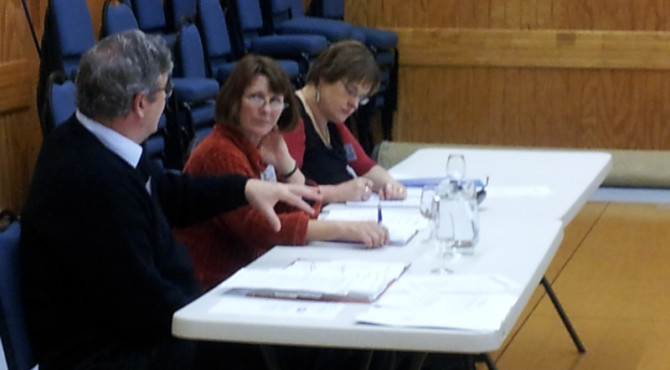
 It’s time for our AGM and we are looking forward to a great attendance. Look at the benefits, scintillating company, some nice food, some even nicer wine, and all at no cost to you personally’
It’s time for our AGM and we are looking forward to a great attendance. Look at the benefits, scintillating company, some nice food, some even nicer wine, and all at no cost to you personally’







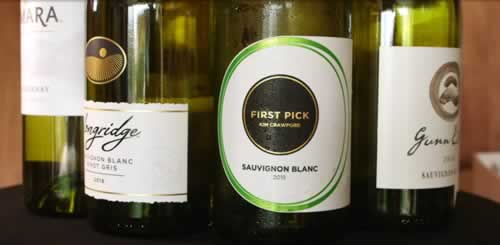
 I am sure many of you will have watched the Fair Go episode on TV recently where New Zealand producers were using some Australian wines to bolster their cheaper lines. The warning is clear, read the label well if you want to be sure you are drinking NZ wines. The argument was that as 70% of NZ white wines are exported they cannot produce enough “economy” wines for the local market. Is the inference that NZ consumers don’t matter? In any event the label should clearly state that it is the “Wine of Australia”. Naturally, no one who is a member of the Cellar Club would be fooled by such rubbish and would immediately identify the taste as a standard Aussie whine.
I am sure many of you will have watched the Fair Go episode on TV recently where New Zealand producers were using some Australian wines to bolster their cheaper lines. The warning is clear, read the label well if you want to be sure you are drinking NZ wines. The argument was that as 70% of NZ white wines are exported they cannot produce enough “economy” wines for the local market. Is the inference that NZ consumers don’t matter? In any event the label should clearly state that it is the “Wine of Australia”. Naturally, no one who is a member of the Cellar Club would be fooled by such rubbish and would immediately identify the taste as a standard Aussie whine.